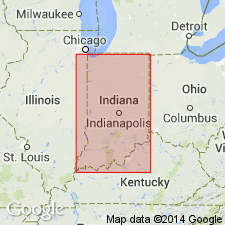
- Usage in publication:
-
- Elkhorn division
- Modifications:
-
- Named
- Dominant lithology:
-
- Shale
- Limestone
- AAPG geologic province:
-
- Cincinnati arch
Summary:
Elkhorn named top division of Richmond group in southern and eastern IN and OH. Predominantly shales and shaly limestones, 46 ft thick, overlying RHYNCHOTREMA DENTATA zone and underlying the Clinton [Brassfield limestone]. Characterized by PLATYSTROPHIA LYNX var. MORITURA, and faunally to be known as MORITURA zone. Consists of 15 ft of very soft blue shale, overlain by 25 ft of blocky argillaceous-calcareous shale, overlain by 6 ft of hard brown limestone, capped by 4 ft of clay. Age is Late Ordovician.
Source: GNU records (USGS DDS-6; Reston GNULEX).

- Usage in publication:
-
- Elkhorn formation
- Modifications:
-
- Overview
- AAPG geologic province:
-
- Cincinnati arch
Summary:
Unit referred to as Elkhorn formation and further described. Type locality designated 3.5 mi southeast of Richmond, IN.
Source: GNU records (USGS DDS-6; Reston GNULEX).
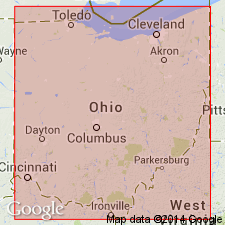
- Usage in publication:
-
- Elkhorn shale
- Modifications:
-
- Revised
- AAPG geologic province:
-
- Cincinnati arch
Summary:
Elkhorn shale assigned to Medina group along with Clinton sandstone. The two are correlatives of Queenstown shale and Whirlpool sandstone of NY section.
Source: GNU records (USGS DDS-6; Reston GNULEX).
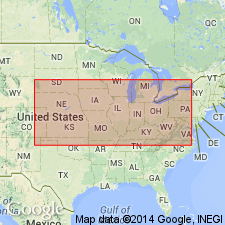
- Usage in publication:
-
- Elkhorn limestone
- Modifications:
-
- Revised
- AAPG geologic province:
-
- Cincinnati arch
Summary:
Unit referred to as Elkhorn limestone on correlation chart and assigned to top of Richmond group. Overlies Whitewater-Saluda formations.
Source: GNU records (USGS DDS-6; Reston GNULEX).
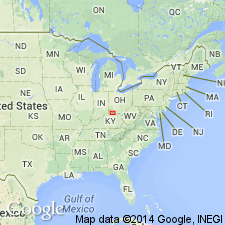
- Usage in publication:
-
- Elkhorn formation
- Modifications:
-
- Revised
- AAPG geologic province:
-
- Cincinnati arch
Summary:
Arnheim, Waynesville, Liberty, Whitewater, and Elkhorn formations define Richmond stage of Cincinnatian series.
Source: GNU records (USGS DDS-6; Reston GNULEX).
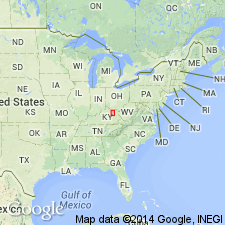
- Usage in publication:
-
- Elkhorn Formation*
- Modifications:
-
- Areal extent
- AAPG geologic province:
-
- Cincinnati arch
Summary:
Beds previously assigned to the faunally defined Whitewater and Elkhorn Formations in area of report are reassigned to the upper part of the Bull Fork Formation and overlying Preachersville Member of the Drakes Formation. Elkhorn Formation no longer used in KY.
Source: GNU records (USGS DDS-6; Reston GNULEX).
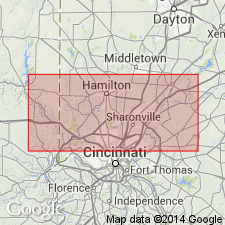
- Usage in publication:
-
- Elkhorn Formation
- Modifications:
-
- Overview
- AAPG geologic province:
-
- Cincinnati arch
Summary:
Elkhorn Formation shown on stratigraphic column of southwestern OH at top of section. Overlies Whitewater Formation. Age is Late Ordovician (Cincinnatian).
Source: GNU records (USGS DDS-6; Reston GNULEX).
For more information, please contact Nancy Stamm, Geologic Names Committee Secretary.
Asterisk (*) indicates published by U.S. Geological Survey authors.
"No current usage" (†) implies that a name has been abandoned or has fallen into disuse. Former usage and, if known, replacement name given in parentheses ( ).
Slash (/) indicates name conflicts with nomenclatural guidelines (CSN, 1933; ACSN, 1961, 1970; NACSN, 1983, 2005, 2021). May be explained within brackets ([ ]).

